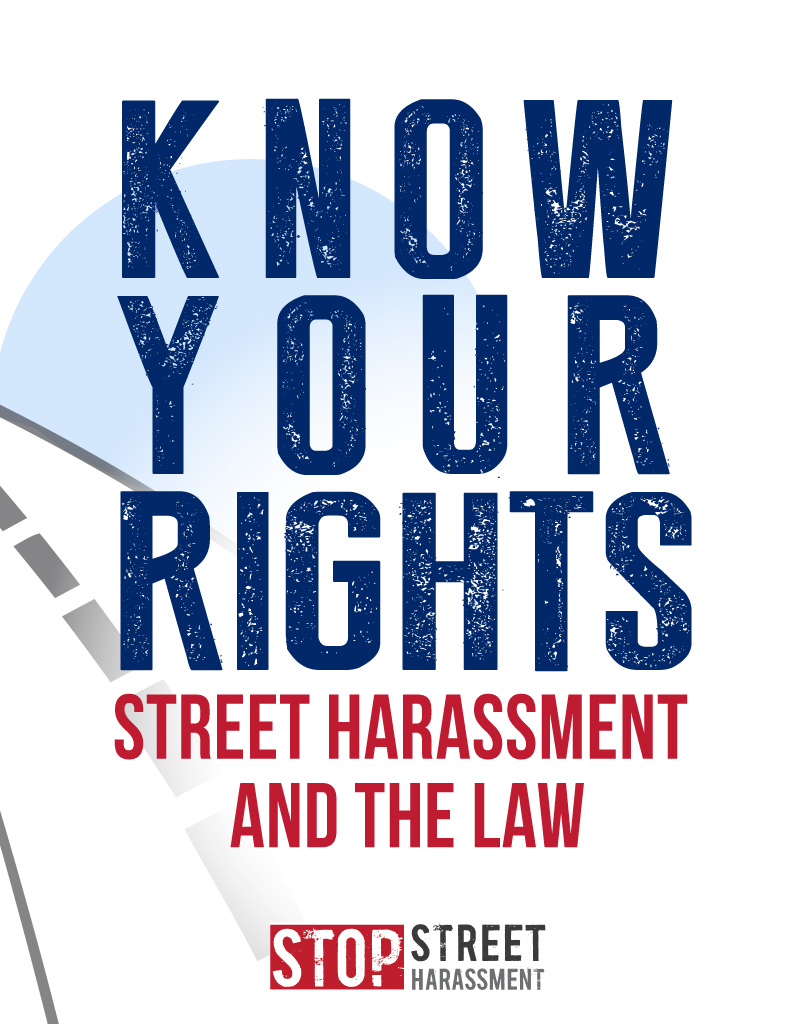 In addition to, or instead of, strengthening existing laws, what if there was a law or ordinance specific to street harassment?
In addition to, or instead of, strengthening existing laws, what if there was a law or ordinance specific to street harassment?
This is something that legal scholars like Cynthia Grant Bowman, author of “Street Harassment and the Informal Ghettoization of Women,” and Tiffany Heben, author of “A Radical Reshaping of the Law: Interpreting and Remedying Street Harassment” have explored.
The following is Grant Bowman’s proposed public ordinance for street harassment at the state or municipal level. (At Stop Street Harassment, we would suggest making it gender neutral to include men who are targets of harassers and the few women who initiate street harassment.)
It shall be a misdemeanor, punishable by a fine of $250, to engage in street harassment. Street harassment occurs when one or more unfamiliar men accost one or more women in a public place, on one or more occasions, and intrude or attempt to intrude upon the woman’s attention in a manner that is unwelcome to the woman, with language or action that is explicitly or implicitly sexual. Such language includes, but is not limited to, references to male or female genitalia or to female body parts or to sexual activities, solicitation of sex, or reference by word or action to the targets of the harassment as the object of sexual desire, or similar words that by their very utterance inflict injury or naturally tend to provoke violent resentment, even if the woman did not herself react with violence. The harasser’s intent, except his intention to say the words or engage in the conduct, is not an element of this offense. This section does not apply to any peaceable activity intended to express political views or provide public information to others. A woman’s dress and prior sexual history are irrelevant to the issue whether the harassment was welcome or unwelcome to her…Any person aggrieved under this statute shall have a private cause of action for damages.
Bowman concedes that the ordinance she proposed is subject to First Amendment challenge. Since the ordinance is both gender-based and content-based in its description of the prohibited behavior and “underbroad” in the conduct it prohibits, the statute could be argued to be invalid. Nonetheless, she says that these possible problems should not deter people from working to pass such an ordinance because the process alone of introducing legislation and campaigning for its passage would likely incite public discussion about street harassment and raise consciousness of it as a problem.
Heben came to similar conclusions as Bowman and generally agrees with Bowman’s proposed ordinance. The biggest hurdle she foresees in passing such a law is the inability to predict if people will actually use it and report harassment. Based on precedent, she found that many women feel that the police and the legal system will continue to fail to acknowledge the gravity of women’s experiences, so women may decide not to waste their time and energy reporting an incident that will not be taken seriously.
Heben fears, rightly so, that discrimination against women in the LGBQT community and women of color might also deter women in those groups in particular from reporting their experiences of harassment. Also, she says, women of color may understandably fear that a law against street harassment will be used to unfairly prosecute men of color and may “regard an ordinance against it as yet another way to punish black men, rather than empower black women.”
Thus, Heben writes, and we agree, all women need to collaborate to develop an ordinance that is sensitive and useful to all populations.
Overall, despite the current shortcomings of Bowman and Heben’s proposed statutes, both scholars support the modification of current laws to deter street harassment and the introduction of a law that criminalizes severe street harassment.
Also, interestingly, in her study of offensive speech in the California Bay Area, sociologist Laura Beth Nielsen found little support for an expanded government role in legislating sexist and racist speech, even among men and women who believed strongly that such speech is offensive and morally wrong. White men tended to cite the First Amendment to support their position, while white women and people of color believed that policing sexist speech would either not work or would backfire. Nielsen, though, believes from her research that changes in law would have an “important symbolic effect.” New laws, she said, would help women make the case that harassment “doesn’t just suck, but is illegal.”
Stop Street Harassment agrees and we would support a specific, well-publicized anti-street harassment law as it could deter harassers, and, perhaps more importantly, it would help quicken our gradual societal shift away from trivializing and dismissing street harassment. It would also offer people more options for dealing with their harassers.
Further, in most cities there are public ordinances against nuisances like littering, not picking up dog waste, and panhandling. Street harassment is a much bigger problem in many people’s, and especially women’s lives, than these problems, as it can negatively impact their quality of life and limit access to public spaces. If these issues have ordinances, surely we can have one that addresses street harassment!
If you are interested in advocating for an anti-street harassment ordinance or law, or want to strengthen an existing law relevant to street harassment and need help, contact us!
